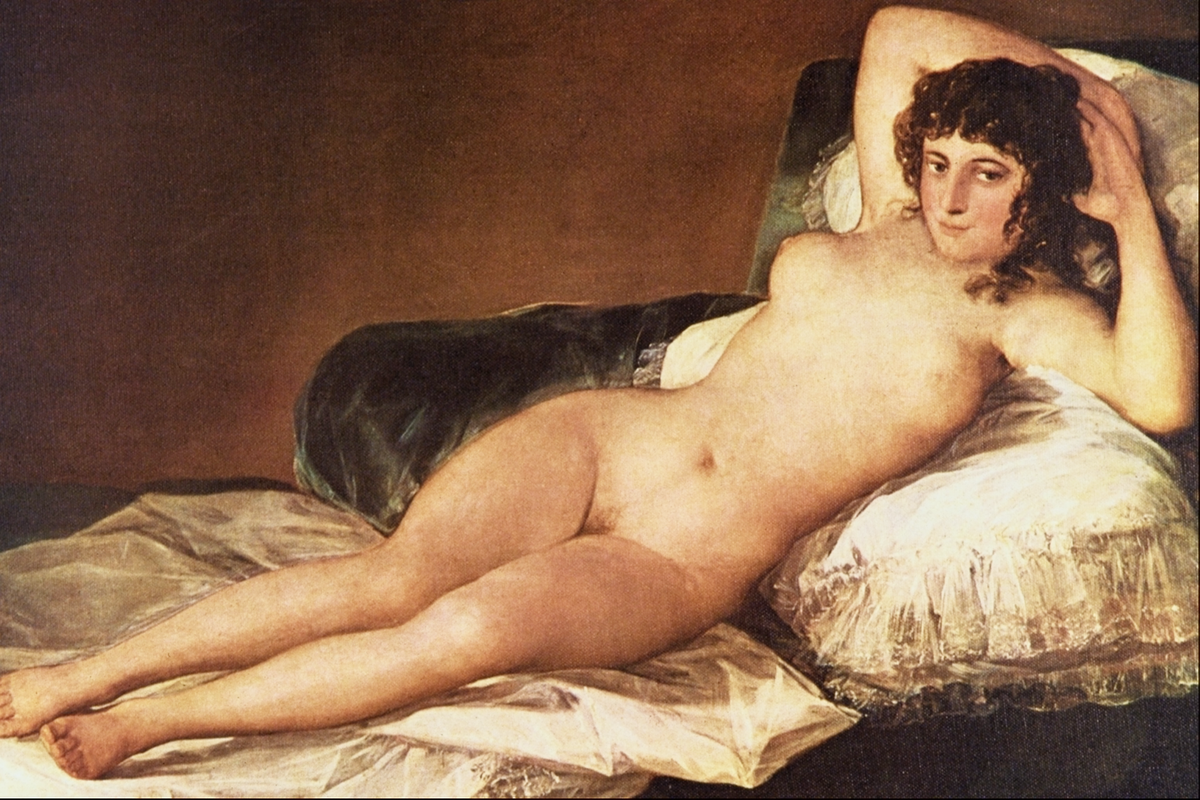Feminism
OnlyFans and the Changing Face of Pornography
OnlyFans is successful, not because it’s extreme, but because it’s innovative. Traditionally, pornography has only really allowed consumers to be passive voyeurs and therefore to see performers as not much more than sexual objects.

Late last week, I warily opened the latest article to be written about OnlyFans, a platform that allows creators to monetise social media posts behind a paywall. I began using the site back in 2017 when it was still in its infancy, and when no one outside the freelance modelling community was talking about it. This year it became big enough to interest the mainstream media, and I have waded through numerous misbegotten attempts by writers to explain the phenomenon. I’ve seen journalists fixate anxiously on the large sums some creators are earning, express concern that it might harm teenagers (though under-18s are locked out of the site), and agonise over the possibility that users might ask creators to do things they don’t want to do (a hazard in many service jobs). The latest example of this trend is an article by Louise Perry for the New Statesman entitled “How OnlyFans Became the Porn Industry’s Great Lockdown Winner—And at What Cost?” Reading it, I barely recognised the site I now use on a daily basis.
OnlyFans accounts for about 25–30 percent of my monthly income, and many of the models among my friends and peers use it, too. I’ve been a freelance model for 17 years, and for the most part I have found my own work, without an agent, by advertising on specialist networking sites used by photographers worldwide. In recent years, I’ve also started producing my own fetish-themed video content and selling it through websites like Clips4Sale, which provides me with a secondary passive income. And when I became aware of OnlyFans in 2017, I started creating content for subscribers there as well—it suits customers who prefer a “little-and-often” serving of short daily updates. This approach allows me to spread my income across multiple streams, diffusing the risk should one discontinue for some reason.
In her opening paragraph, Perry writes disapprovingly of the public’s appetite for “ever more extreme pornographic content.” This is a jarring observation in an article about OnlyFans, not least because the site is a platform completely unsuited to extreme content. The site’s list of banned words is extensive; their list of banned activities is similarly well-populated. So OnlyFans has already positioned itself at the very shallowest end of the pornographic pool. Those who earnestly wish to protect the public from “extreme” content would do better to look at Pornhub and similar tube sites which operate with no paywall, and which have a far more relaxed attitude to taboo material.
OnlyFans is successful, not because it’s extreme, but because it’s innovative. Traditionally, pornography has only really allowed consumers to be passive voyeurs and therefore to see performers as not much more than sexual objects. OnlyFans pages, on the other hand, include a plethora of content that shows models and creators to be more complicated than that. Consumers can’t easily reduce us to a collection of sexual signifiers if they’re watching us decorate our houses for Christmas, talk about our weekend plans, and sometimes rant (in my case) about sexism. OnlyFans is still pornography, of course, but it’s different pornography—good pornography that encourages customers to see us as real people. My customers know I’m happily married, and I want them to feel welcome as visitors in my home. I’m happy if my work gives them orgasms, but I aim to provide them with company and entertainment too. “Come for the porn, stay for the community,” sums up what I try to achieve, and it’s a popular strategy.
If a fear of male libido and arousal animates some feminists’ anxiety about pornography, I’d love to reassure them; my membership is mostly male, and certainly these men find me attractive on some level. But that doesn’t mean they behave like stalkers or predators when we interact. On the contrary, they understand that they are one fan among many and that I have a life outside of sex work. If you’re a performer who also wants to be treated like a person with feelings, fragilities, and a life that isn’t always sexy, platforms like OnlyFans can serve you well.
And the site seems to appeal to people who want to consume their erotica in an ethical fashion. Ben, one of my members, says that the site allows him to “discover the person behind the pictures.” James, another long-standing member, adds that he feels more comfortable knowing that “the creators are in control of what they’re shooting.” I like breaking down the barriers between consumer and creator. If some of them are young and impressionable, or perhaps have never had a girlfriend of their own, their interactions with me, however limited, can help to teach them a bit about what they’d value in a partner. That companionship is as important a part of a relationship as physical attraction, and talking and laughing are as valuable as sex.
I do understand why some feminists used to be so critical of pornography. Pre-Internet, the (mostly male) producers called the shots, enjoyed long-term careers, and had time to generate real wealth. Women were more likely to be treated as disposable. But I’m disappointed that anti-porn feminists have been unwilling to update their opinions as the industry has changed dramatically. OnlyFans is just one example—before it launched, my peers and I were already shooting our own content and selling it on platforms which made this easy to do. Many consumers are happy to buy fairly simply-produced work if it caters to their desires, so I’ve been able to shoot a huge body of saleable video content entirely on my own and with myself as the only performer.

Over time, I’ve watched a shift of economic power occur; when I began modelling in 2003, it tended to be the photographers who drove the expensive cars and who owned the big houses. Models were younger and often enjoyed much shorter careers, so they didn’t necessarily accrue much wealth before the industry discarded them. These days, the number of female model-producers I know who earn £100,000 or more each year is climbing fast. They stay in the business longer, and the rewards tend to grow with time and exposure. And thanks to platforms like OnlyFans, if we want to shoot everything alone from home we can do so. With steeply increasing profits, control over who we work with, and no need to drag ourselves to cattle market castings or to photoshoots we don’t want to do, we have never been more empowered.
So why are some feminists so exercised by OnlyFans’s growing popularity? After all, its flexible business model allows women in all sorts of (sometimes difficult) circumstances to make money on their own terms. Perry notes that the median membership for an OnlyFans creator is only 30. But for the vast majority of creators, it is by no means a full time job. Until COVID-19 and lockdown, I was only uploading one short video a day. The entire update took me less than five minutes to produce, and I was still making enough from my 60-or-so members to cover my monthly mortgage payments. Creators with only 30 members may not be able to go full time, make a six-figure salary, or buy a house with their earnings, but their part time OF job may well pay a good proportion of their rent, supplement a low-paying full time job, or provide them with the extra money to pay for a holiday.
Perry complains that OnlyFans is “more unequal than South Africa.” Be that as it may, the site is not capriciously keeping some creators on low wages while disproportionately rewarding its favourites. It simply provides a platform, and we make what we can of it. “The same amount of effort [from creators] goes in” she writes, “but a very different level of reward comes out.” But OF creators are not employees, they are the pornographic equivalent of YouTubers. And as a YouTuber as well as an OF creator, I find both sites to be fairly meritocratic. Lots of creators on YouTube start without an established name or fan-base, but if they are dedicated and talented, if they choose subject matter that proves popular, and if they deliver quality content often, they might become the next YouTube millionaire. If, like me, they choose a niche subject and only upload occasionally, they’ll make almost no money at all.
OnlyFans is no different. Frequent updates and regular interaction will draw a more loyal fanbase. Shooting more ambitious content allows creators to charge a premium. The rewards aren’t equal for all, but remuneration reflects effort and ability, neither of which are evenly distributed. Perry compares the creators who earn enough to buy houses from their earnings to “casino millionaires.” This is a hurtful if familiar comparison, but it is also wrong, because successful creators are not rewarded for luck but for the content they have produced. They worked for every cent, often beginning as complete unknowns while juggling another career. A creator like Savannah Solo opened her OF account in January 2020. Despite having no modelling experience at all, she is now one of the site’s top 0.3 percent of earners. She didn’t win a lottery; she merely entertained so many people, and did it so well, that she’s reaping the rewards, which include her own house.
“Why do people desire this?” laments Perry. Well, for the same reason people turn on daytime TV when they’re alone, or have favourite YouTubers they come to know, or subscribe to Patreon pages to keep up with content creators on other platforms. People are just interested in other people. Is it so alarming that we’re sometimes also interested in semi-naked people behaving in ways we find arousing? As Bruce, one of my long-term members, says, “I love you for your fun.” Detractors fail to understand that the interaction is valuable both ways. Obviously, I like earning £4,000 a month from OnlyFans, but during lockdown, my members have kept me company, too. Last night I watched a horror film (remotely) with one of them; no one was being paid—we’ve just become friends through social media. That we met on OnlyFans rather than Facebook feels largely irrelevant at this point.
“And, in the end, cui bono?” Perry concludes. Who benefits? We all do. James, the friend with whom I watched last night’s horror film expresses it best. “For the most part we’re just normal people, like the creators themselves, who enjoy normal human interaction.” OF has allowed me to humanise my pornographic output. In the long-term, pornography itself may benefit from this new format. I can be as real as I dare, and my customers get to know me as a whole person. I enjoy it and so do they. So what is wrong with that? At a time of enforced atomisation, the daily interaction that OF users and creators experience has never felt more valuable.
Ariel Anderssen is a professional model and performer who specialises in producing BDSM video content. Her website is ArielAnderssenAuthor.com and you can follow her on Twitter @ArielAnderssen.
OF members’ names have been changed.






